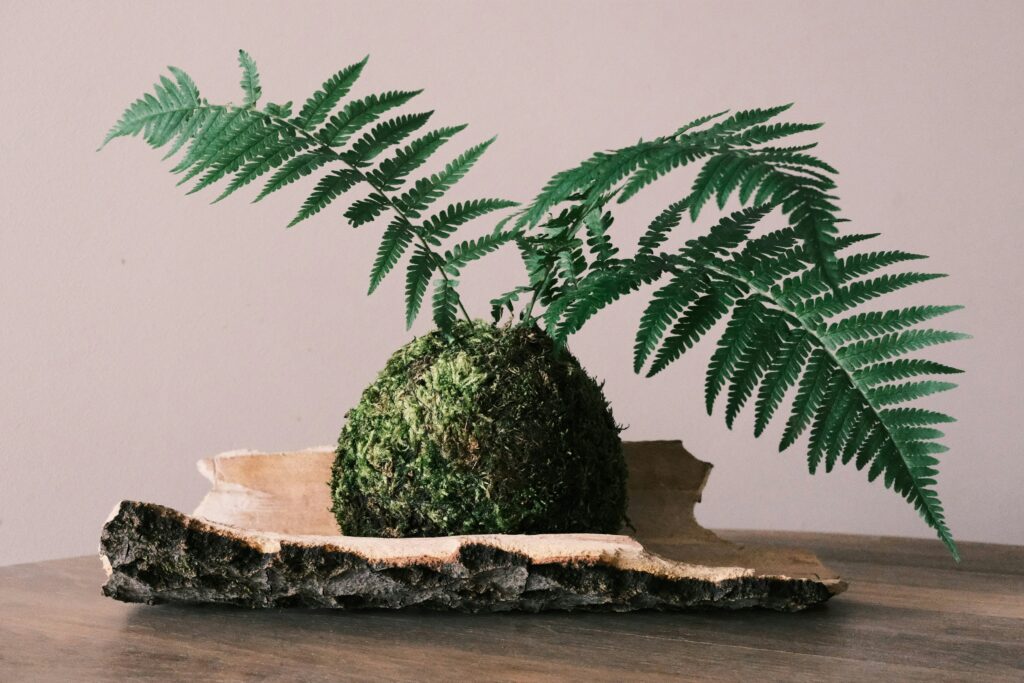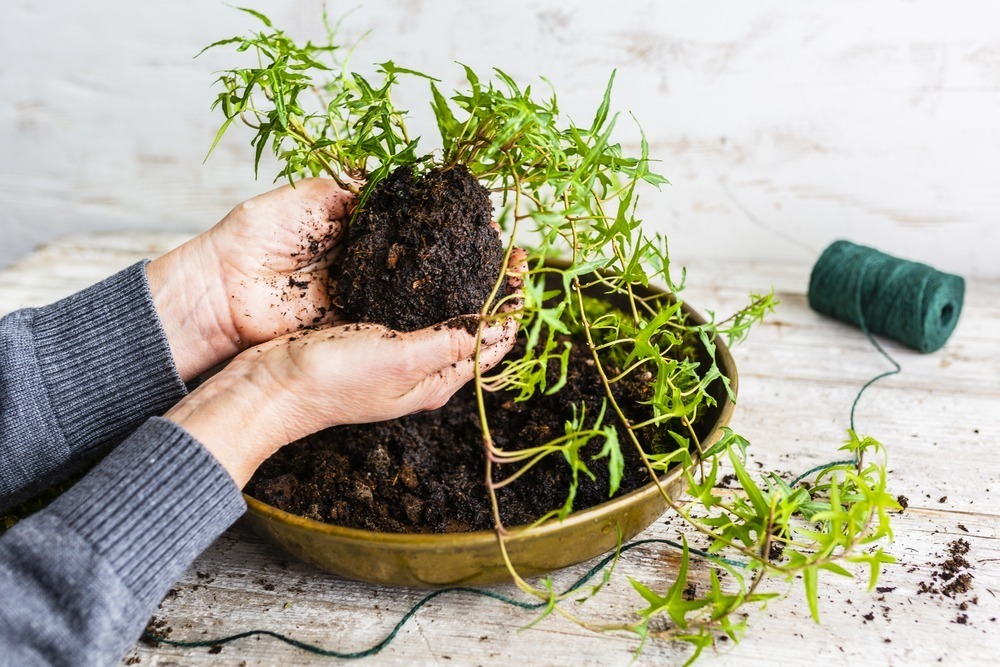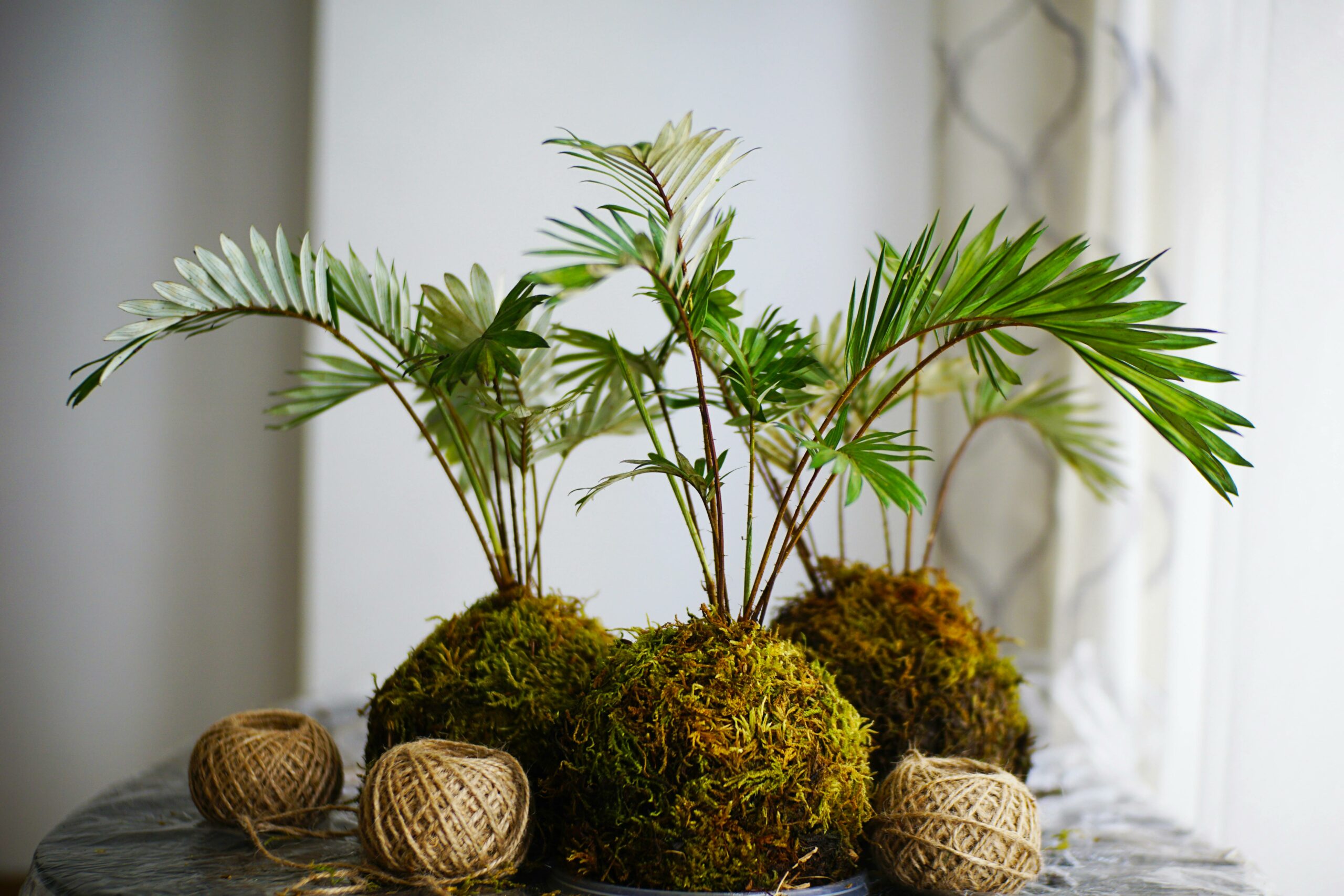While you might be familiar with the Japanese traditions of Bonsai, you may not have stumbled upon Kokedama, a beautiful form of Japanese garden art. Taking its name from the Japanese for "moss ball," these stunning living planters encase the root systems in a ball of soil covered in living moss, giving them a Tolkien-esque enchanted appearance.

Photo by Rust & Leaf
They are versatile and can be designed very creatively to make an eye-catching statement piece in any home and they have therapeutic benefits too. If you love houseplants and want something new and different, the kokedama ball might be what you are looking for.
Exploring Kokedama
Kokedama evolved from the arts of bonsai and Nearai, which is a form of bonsai in which the roots are left exposed to grow over rock surfaces. As these practices have a real aesthetic edge, the art form develops creatively as more get involved. The Kokedama method is like other Bonasai ventures, kindling a deep connection with nature and providing an air of tranquility.
Why Try Kokedama?
Nature and indoor plants have a huge effect on mental health. During the pandemic, studies centered around Kokedama mixed with breathing exercises and essential oils showed promising results for stress relief and help with mental health. Studies recommend 120 min per week of nature exposure for health and happiness.
Kokedama requires a certain amount of mental focus. In addition to the therapeutic benefits, there are the following obvious advantages that Kokedama offers to consider:
-
Aesthetic appealing
-
Small footprint
-
Easy to maintain
-
Can be grown in small spaces

How to Make a Kokedama in 4 Simple Steps:
Making a DIY Kokedama is pretty easy, and anyone can give it a go with the following materials or a good substitute.
-
A small plant such as a fern or type of succulent - you can experiment with any type of plant
-
Bonsai soil or a mixture of potting soil and clay
-
String or twine and scissors
With the above ready, follow the steps below to create your Kokedama.
-
Preparing the Soil Mixture and Plant
If you don't have access to Bonsai soil, don't worry. Even the National Bonsai Foundation itself says that no one can agree on the perfect mix. If you ask 10 people what mix to use, you’ll get 10 unique answers.
More importantly, you need to make sure the soil is adequately moist and that you remove the plant from its original pot exposing as much of the root as possible by shaking the soil loose.
-
Forming & Attaching
With the right moisture level, it should be relatively easy to form the soil ball into your desired size and shape.
Add water if it seems too dry to hold together, and let it dry out if you have been over-generous.
To attach the plant, place its roots directly on top of the ball and then gently squeeze and mold the soil form around them ensuring they aren’t left bare.
-
Wrapping the Moss and Soaking the Kokedama
The sphagnum moss needs to be pliable, so soak it for a while first and then wring out the excess water.
Wrap it around your Kokedama form and then secure it with string or twine. Try to wrap it decoratively for additional visual appeal.
Don’t wrap it too tightly, or you might damage the plant roots.
The final step is to give it a ten-minute soak in a bowl of water.

Photo by Armand Valendez
Creative Kokedama Display Ideas
When it comes to displaying your Kokedama, you have lots of options
- Using additional string, you could suspend your Kokedamas at different height levels to create amazing hanging gardens. Or use decorative trays and stands to make a unique table centerpiece or a grand focal point in the room of your choice.
- Kokedama allows you to go wild with creativity, so why not get searching online for some tranquil Kokedama inspiration, don’t forget to surf safely; for the ultimate peace of mind when browsing ideas, check out Surfshark.
Kokedama Plant Care Instructions:
Caring for a kokedama plant involves regular watering, proper placement, and occasional maintenance. Here are some detailed steps to help you take care of your kokedama:
- Watering:
- Submersion: The best way to water a kokedama is by submerging it in water. Fill a bowl or shallow dish with room temperature water and place the kokedama in it, allowing it to soak for about 10-15 minutes. Once it’s thoroughly soaked, gently squeeze out the excess water.
- Frequency: Watering frequency depends on the plant type and environment. Generally, once a week is sufficient, but in drier environments, you might need to water more often. Check the weight of the moss ball. If it feels light, it’s time to water.
- Humidity:
- Misting: Regular misting can help maintain humidity levels, especially if you live in a dry climate. Mist the moss and the plant leaves lightly with water every few days.
- Light:
- Indirect Light: Most kokedama plants thrive in bright, indirect light. Avoid direct sunlight as it can dry out the moss and harm the plant.
- Plant Type: Ensure that the light conditions match the specific needs of the plant species in your kokedama.
- Temperature:
- Stable Environment: Keep your kokedama in a stable environment with moderate temperatures. Avoid placing it near drafts, air conditioners, or heaters.
- Pruning:
- Regular Trimming: Trim the plant as needed to maintain its shape and encourage healthy plant growth. Remove any dead or yellowing leaves.
- Fertilizing:
- Diluted Fertilizer: Feed the plant with a diluted liquid fertilizer every few weeks during the growing season. Follow the specific fertilizer instructions for the plant type.
- Moss Maintenance:
- Moss Care: If the moss starts to deteriorate, you can replace it by carefully wrapping new sphagnum moss around the soil ball and securing it with string.
- Rotation:
- Even Growth: Rotate the kokedama occasionally to ensure even growth and prevent the plant from leaning towards the light source.
By following these care tips, your kokedama moss balls can remain healthy and beautiful for a long time.
Kokedama is a simple but elegant horticultural art form that can bring a lot of peace to your home as well as give your living space a natural Japanese aesthetic. It isn’t rocket science, and with the key materials, anyone can make an eye-catching addition to their home by following the steps outlined above.
